This article was co-authored by Karen Litzy, PT, DPT. Dr. Karen Litzy, PT, DPT is a licensed physical therapist, international speaker, owner of Karen Litzy Physical Therapy, PLLC, and the host of the Healthy Wealthy & Smart podcast. With over 20 years of experience, she specializes in a comprehensive approach to practicing physical therapy utilizing therapeutic exercises, manual therapy, pain education, and home exercise programs. Karen holds a Master of Science in Physical Therapy and a Doctor of Physical Therapy from Misericordia University. Karen is a member of the American Physical Therapy Association (APTA) and is an official spokesperson for the APTA as a member of their media corps. She lives and works in New York City.
There are 9 references cited in this article, which can be found at the bottom of the page.
wikiHow marks an article as reader-approved once it receives enough positive feedback. This article received 13 testimonials and 94% of readers who voted found it helpful, earning it our reader-approved status.
This article has been viewed 204,986 times.
Carpal tunnel syndrome is a condition in which the median nerve, which runs from the hand to the forearm, becomes compressed. This can cause a variety of unpleasant symptoms, including pain in the hand and wrist, numbness, tingling, and the inability to perform fine motor tasks. If pain from carpal tunnel syndrome is interfering with your ability to get a good night's sleep, you may be able to make a few simple changes to your sleep routine to help improve the situation. If that doesn't work, treating the cause of your pain, either at home or by seeing a doctor, should help you get back to sleep.
Steps
Adjusting the Way You Sleep
-
1Wear a brace. One of the easiest things you can do to make sleeping easier if you have carpal tunnel syndrome is to wear a wrist brace to bed. Any wrist brace will work, as long as it goes over your hand and down past your wrist. That will help keep your wrist in a neutral position while you sleep.[1]
- You may want to wear a brace during the day as well, depending on what kinds of activities typically cause you pain.
- You can buy a brace at any drug store, or your doctor may suggest that you have a custom one made for you.[2]
-
2Avoid sleeping on your side. Although it hasn't been definitively proven, sleeping on your side may be associated with a higher risk of developing carpal tunnel syndrome. This is likely due to the fact that the wrist is more likely to be compressed in this position. If you sleep on your side, try sleeping on your back to avoid further compressing your wrist as you sleep.[3]Advertisement
-
3Support your arms while you sleep. It's important to think about where you normally place your arms while you sleep and whether or not this may be worsening your symptoms. Try to avoid sleeping with either arm underneath you or your pillow, as this may worsen your carpal tunnel syndrome.
- Propping your arms up on pillows while you sleep may help relieve tension and reduce pain. If you are sleeping on your side, make sure the side affected by carpal tunnel is on top. Place a pillow in front of you and place the affected hand on the pillow. You may need to experiment with the height of the pillow to find the most comfortable position for you.
-
4Keep your arm straight. Bending your elbow may increase the compression on your nerve, which can make your symptoms worse. As much as possible, try to keep your elbow straight throughout the night.[4]
- You may want to try wrapping a towel around your elbow so that it is difficult to bend. This may help you train yourself to keep your arm straight at night.
Treating Middle-of-the-Night Pain
-
1Apply ice. Icing your wrists can help reduce swelling, which can in turn decrease the amount of pain you feel. Try holding an ice pack on your wrists for 15-20 minutes.[5]
- If you find yourself waking up needing to ice your wrists on a regular basis, you may want to get into the habit of icing before bed every day.
- You can also do this throughout the day as needed.
-
2Apply pressure to your wrists. You may be able to get quick relief from your carpal tunnel symptoms, including pain, numbness, and tingling, by stretching and applying pressure to your hand and wrist. Try using the following technique, which focusing on acupressure points, when you start experiencing symptoms that keep you awake:[6]
- Extend your forearm out straight, but keep your elbow bent.
- Use your other hand to push your four fingers down towards the floor, opening your wrist. Hold this stretch for up to 15 seconds.
- Use your other hand to push your thumb and index finger down. Hold this for up to 15 seconds.
- Make a fist and observe the inside of your wrist. You should notice a small gap appear between your bones and tendons. Place your opposite thumb in this space and apply pressure for 30 seconds. You will probably notice that your fist automatically releases, which is fine.
- Place the base of your opposite index finger on the back of your hand where your wrist creases. Note the location of the tip of your index finger, and then use your opposite thumb to apply pressure to this spot as you lift your arm up. Keep lifting and applying pressure for 30 seconds.
-
3Try medication. Over-the-counter NSAIDs can provide significant relief to people suffering from carpal tunnel syndrome. These drugs reduce pain and swelling. You may want to take them regularly before bed to help prevent your symptoms, or as needed whenever you have difficulty sleeping due to carpal tunnel pain.[7]
- Aspirin, ibuprofen, and naprosyn are all NSAIDs.
- Be sure to talk to your doctor about your dosing, and never take more than the recommended dose.
-
4Shake out your hand. Sometimes carpal tunnel will cause numbness in your hand due to accidentally laying on your wrist.[8] If you find that your hand is going numb, get up and lightly shake out your hand for a minute. Sometimes this may be all you need to restore feeling to the hand and get back to sleep.
-
5Make sure that you are sleeping in a warm room. Anything that irritates the nerves in your wrists can bring on carpal tunnel.[9] Carpal tunnel can sometimes be brought on or aggravated by cold conditions, so it is important to sleep in a room that is not too cold. Sleeping in a cold room can reduce the temperature and blood flow in your hands, causing compression of the nerves.
Making Lifestyle Changes to Reduce Your Pain
-
1Do wrist exercises. Stretching your wrists can help relieve the pressure on your nerve and reduce your pain. Try doing ten reps of the following exercise at least once a day:[10]
- Hold your arms straight out in front of you with your palms facing down.
- Bend your wrists towards you so that all ten fingers are facing up towards the ceiling, and hold this position for five second.
- Relax and straighten your wrists.
- Make a tight fist with both hands.
- Bend your wrists away from you so that all ten fingers are pointing towards the floor, and hold this position for five seconds.
- Relax and straighten your wrists. Wait five second before repeating.
-
2Practice yoga. Try incorporating a yoga practice into your routine. It has been shown to reduce pain from carpal tunnel syndrome, while also improving hand strength.
- If you don't want to take classes at a studio or gym, you can purchase a video or find a free one online. Then you can practice your yoga in your own home whenever it is convenient for you.
-
3Avoid activities that aggravate your pain. As much as possible, try to avoid doing things that cause your carpal tunnel pain to become worse. If you are not able to stop doing some activities (particularly typing) you may be able to find ergonomic devices that will decrease the strain on your wrist while you do them. The following activities are common triggers for carpal tunnel pain:
- Anything that puts a lot of pressure on the heel of your palm (like push-ups)
- Activities that require constant back and forth movement of your wrist (like typing, sewing, or playing video games)
- Forceful grasping (like using garden clippers)
- Expose your hands to vibration (like using power tools)
- Holding your hand in the same position all day.[11]
Getting Medical Treatment for Carpal Tunnel Syndrome
-
1Get hand therapy. Your doctor may also recommend that you get hand therapy, a special kind of physical therapy that focuses solely on the hands and wrists. You will be required to go to regular sessions and perform a variety of exercises meant to strengthen your hands and reduce your pain.[12]
- Your hand therapist may also request that you do exercises at home between appointments. If you want your condition to improve, it's very important that you do them as instructed.
-
2Try injections. If you need pain relief, but you're not ready for surgery, you can consider seeing a doctor to have injections in your wrists. These normally only provide temporary pain relief.[13]
- Steroid injections are commonly used to relieve pain from carpal tunnel syndrome.
- Botox injections may also help your condition.
-
3Try acupuncture or cupping. If you're looking for a drug-free way to treat your pain, you may want to look into acupuncture and cupping. Both techniques rely on the theory that the body has multiple pressure points that can be stimulated to reduce pain.[14]
- Acupuncture involves the use of small needles, while cupping involves placing a series of glass cups on the body's pressure points to create suction.
-
4Have surgery. For most people, surgery is a last resort, but if carpal tunnel syndrome is interfering with your life and nothing else is working to improve your symptoms, it may be the best option for you. Talk to your doctor about the risks and benefits of surgery to determine if it is right for you.
- Carpal tunnel release surgery involved cutting the tissue around the medial nerve in order to release the pressure.
- There are two types of carpal tunnel surgery: open release surgery requires a two-inch long incision, while endoscopic release surgery requires two smaller incisions, which may reduce the patient's pain and recovery time.
- It can take several months to fully recover from carpal tunnel surgery, although you may experience relief of your symptoms immediately after the procedure.
-
5Consider starting a weight loss program. Obesity can be related to carpal tunnel syndrome, so a structured weight loss program may improve carpal tunnel symptoms. Make sure that you discuss your options with your physician before making any drastic changes to your diet.[15]
- Sometimes, carpal tunnel can be aggravated by extra swelling due to pregnancy. If that's the case, keep in mind that the symptoms are often relieved once your baby is born. Just wear a brace to help stabilize your wrist while you're sleeping.[16]
Expert Q&A
Did you know you can get expert answers for this article?
Unlock expert answers by supporting wikiHow
-
QuestionHow can I stop carpal tunnel pain at night?
 Karen Litzy, PT, DPTDr. Karen Litzy, PT, DPT is a licensed physical therapist, international speaker, owner of Karen Litzy Physical Therapy, PLLC, and the host of the Healthy Wealthy & Smart podcast. With over 20 years of experience, she specializes in a comprehensive approach to practicing physical therapy utilizing therapeutic exercises, manual therapy, pain education, and home exercise programs. Karen holds a Master of Science in Physical Therapy and a Doctor of Physical Therapy from Misericordia University. Karen is a member of the American Physical Therapy Association (APTA) and is an official spokesperson for the APTA as a member of their media corps. She lives and works in New York City.
Karen Litzy, PT, DPTDr. Karen Litzy, PT, DPT is a licensed physical therapist, international speaker, owner of Karen Litzy Physical Therapy, PLLC, and the host of the Healthy Wealthy & Smart podcast. With over 20 years of experience, she specializes in a comprehensive approach to practicing physical therapy utilizing therapeutic exercises, manual therapy, pain education, and home exercise programs. Karen holds a Master of Science in Physical Therapy and a Doctor of Physical Therapy from Misericordia University. Karen is a member of the American Physical Therapy Association (APTA) and is an official spokesperson for the APTA as a member of their media corps. She lives and works in New York City.
Physical Therapist
References
- ↑ Karen Litzy, PT, DPT. Physical Therapist. Expert Interview. 27 August 2020.
- ↑ http://www.eatonhand.com/hw/hw006.htm
- ↑ http://www.ncbi.nlm.nih.gov/pmc/articles/PMC3092881/
- ↑ http://orthoinfo.aaos.org/topic.cfm?topic=a00069
- ↑ http://www.prevention.com/health/health-concerns/how-solve-carpal-tunnel-syndrome
- ↑ http://easyhealthoptions.com/self-acupressure-for-carpal-tunnel-relief/
- ↑ http://www.eatonhand.com/hw/hw006.htm
- ↑ https://www.mayoclinic.org/diseases-conditions/carpal-tunnel-syndrome/symptoms-causes/syc-20355603
- ↑ https://www.mayoclinic.org/diseases-conditions/carpal-tunnel-syndrome/symptoms-causes/syc-20355603
- ↑ http://www.eatonhand.com/hw/ctexercise.htm
- ↑ Karen Litzy, PT, DPT. Physical Therapist. Expert Interview. 27 August 2020.
- ↑ http://www.eatonhand.com/hw/hw006.htm
- ↑ http://www.prevention.com/health/health-concerns/how-solve-carpal-tunnel-syndrome
- ↑ http://www.prevention.com/health/health-concerns/how-solve-carpal-tunnel-syndrome
- ↑ https://www.sciencedaily.com/releases/2009/10/091025194759.htm)
- ↑ Karen Litzy, PT, DPT. Physical Therapist. Expert Interview. 27 August 2020.
About This Article
If you’re struggling to sleep due to carpal tunnel syndrome, try changing the position you sleep in and using simple pain relief techniques. Prop your arms up with pillows before you go to sleep, since this may relieve tension and help manage pain. You could also try wrapping a towel around your elbow to keep your arm straight, because bending your arm can increase the pressure on your wrist. As you drift off to sleep, aim to lie on your back rather than on your side, since you’re more likely to compress your wrist in an awkward position if you lie on your side. If you experience pain during the night and can’t sleep, apply ice to your wrist for 10 minutes for pain relief. Another quick fix is to shake your hand around for a minute or 2, which may help get rid of tingling and numbness. For tips on how to perform wrist exercises during the day to manage your carpal tunnel, read on!
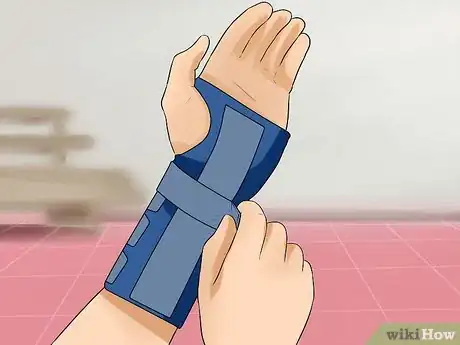

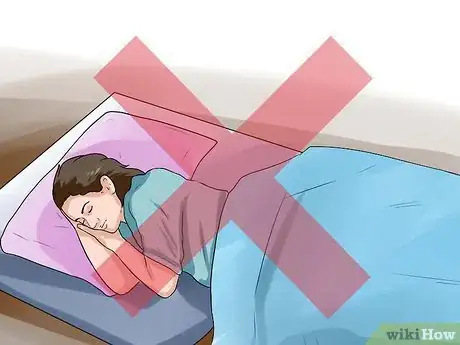
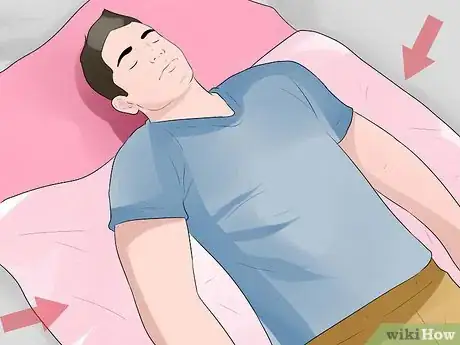
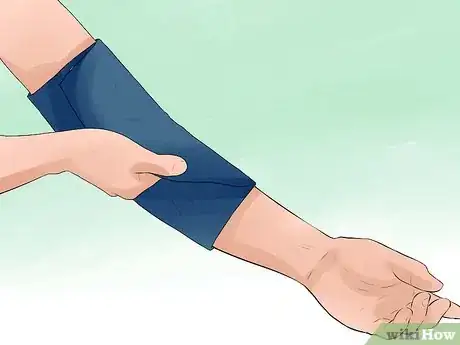
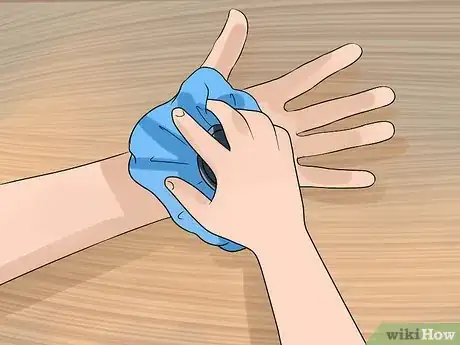
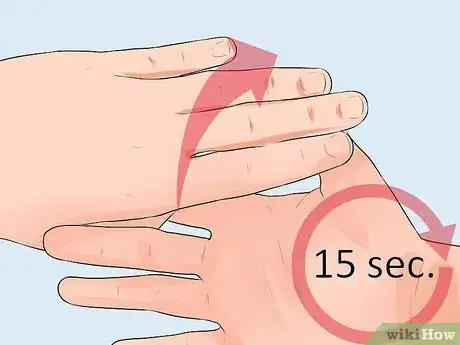

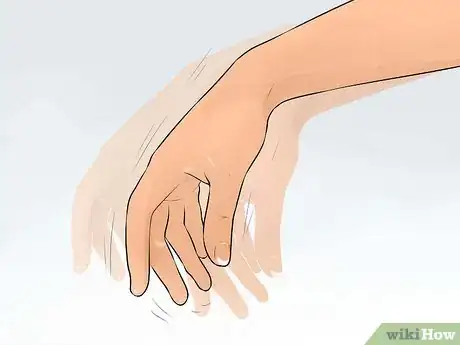

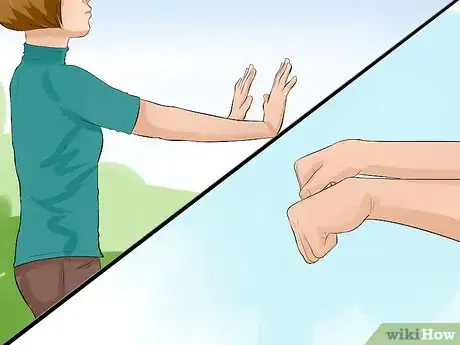

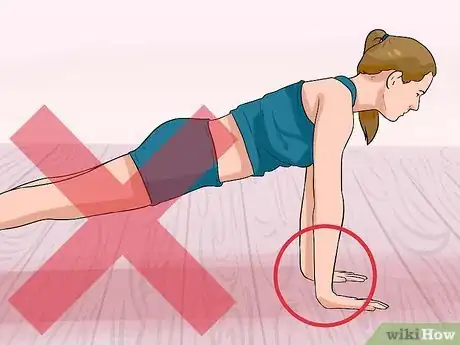
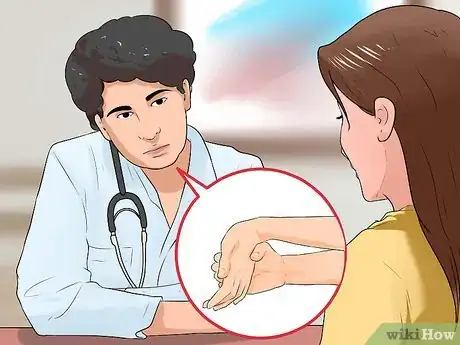
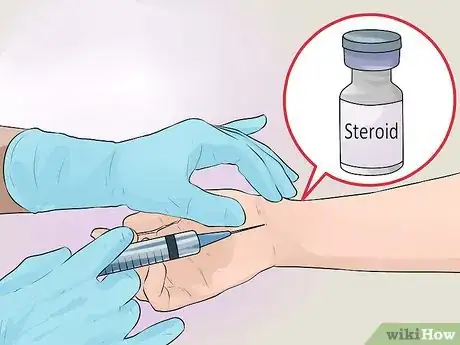







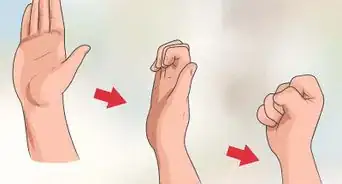



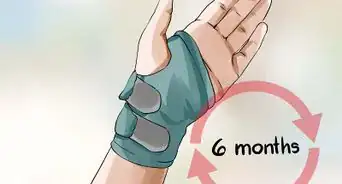
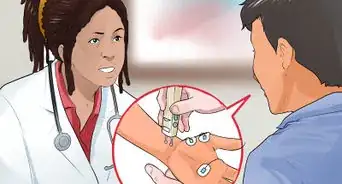













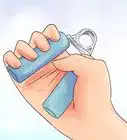




































Medical Disclaimer
The content of this article is not intended to be a substitute for professional medical advice, examination, diagnosis, or treatment. You should always contact your doctor or other qualified healthcare professional before starting, changing, or stopping any kind of health treatment.
Read More...